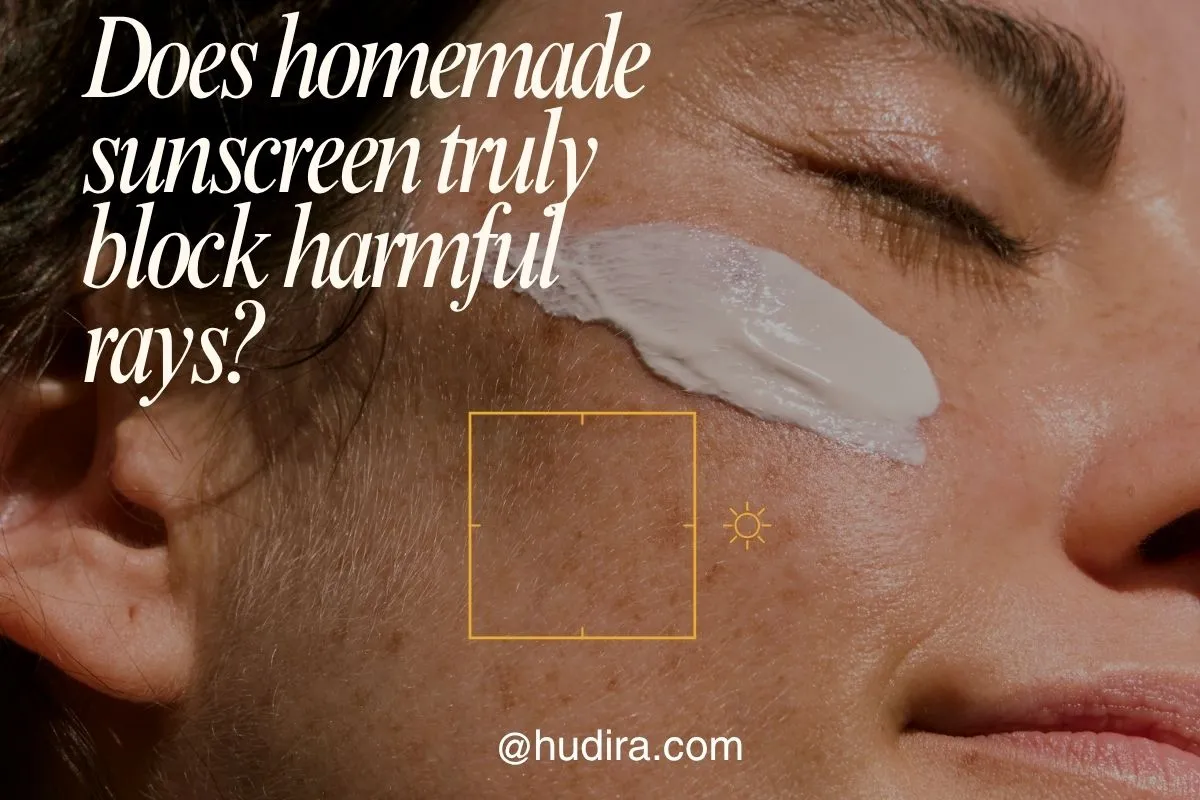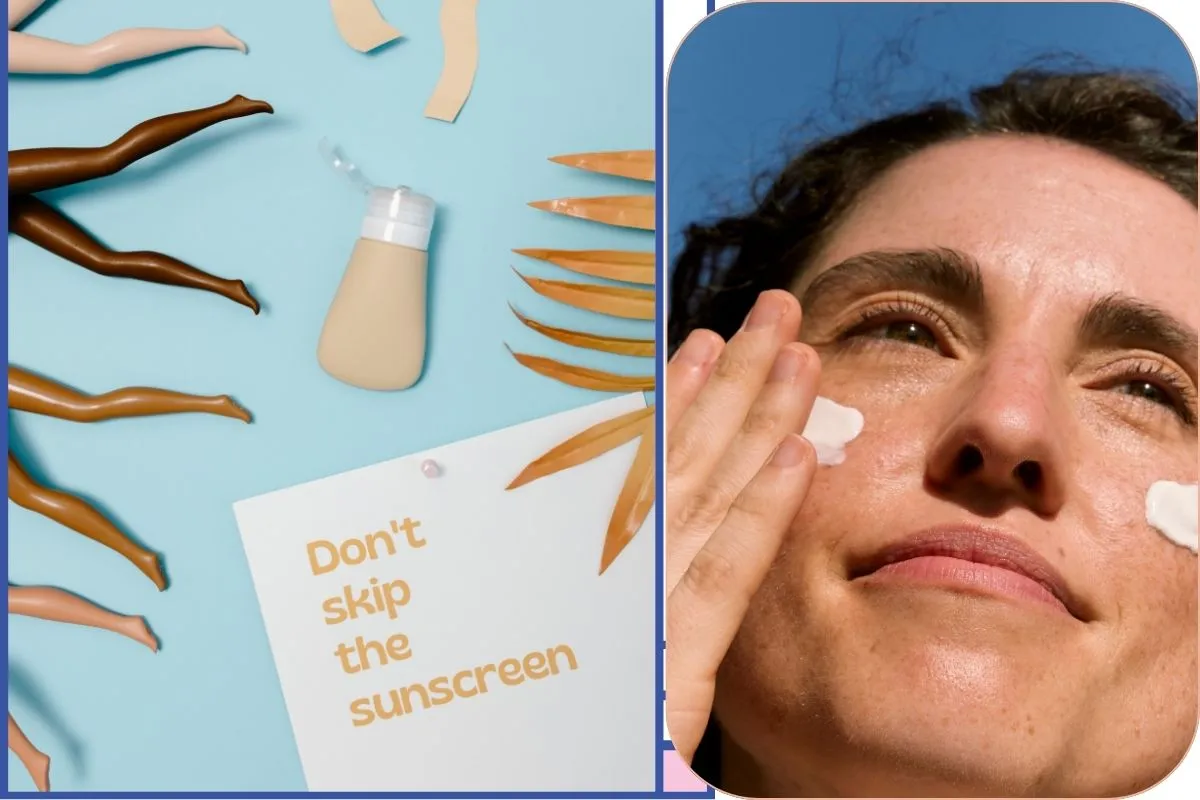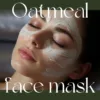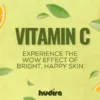No products in the cart.

Imagine spending hours mixing oils, butters and powders to craft your own homemade sunscreen—believing you’re protecting your skin from harmful sun exposure. You’ve heard the buzz, the “natural sunscreen recipe” whispers, the “make natural sunscreen at home” trend. You feel empowered, eco-friendly and safe.
But here’s the catch: while the idea of homemade sun protection sounds lovely, research and dermatologists warn that many DIY solutions leave you dangerously vulnerable to UV damage, burns and premature aging. The suspense builds: what appears harmless and natural may, in fact, give a false sense of safety and that’s exactly what we’ll unravel today.
What “homemade sunscreen” really means
When we say homemade sunscreen, we’re talking about a natural sunscreen recipe crafted at home often using oils, butters, non-nano zinc oxide, beeswax or essential oils. It falls into the broader category of homemade sun protection and often appeals to those seeking gentle, fragrance free sunscreen alternatives.
The growing demand for natural sunscreens and DIY formulations stems from concerns about chemicals, bright-white casts and high prices of commercial products. Many people ask: “If it’s natural, why not make natural sunscreen at home?” And that question drives much of the DIY trend in sun care.
However, to be truly effective, sun protection isn’t just about natural ingredients, it’s about broad-spectrum coverage (UVA + UVB), verified SPF, water resistance, stable formulation and consistent application. Commercial products undergo rigorous testing under regulatory oversight something homemade versions generally cannot replicate.
The science behind sun protection and why DIY is risky
SPF (Sun Protection Factor):
SPF measures how much longer your protected skin can stay in the sun without burning compared to bare skin. For example, SPF 30 allows roughly 30 times more exposure before redness occurs. However, SPF only indicates UVB protection so you still need broad-spectrum coverage for full defense.
Broad-spectrum:
A broad-spectrum sunscreen shields against both UVB rays that burn the surface and UVA rays that penetrate deeper, causing aging and cellular damage. Products labeled “broad-spectrum” have been tested to ensure balanced protection across both wavelengths, reducing the risk of sunburn and long-term skin harm.
Water resistance:
A water-resistant sunscreen maintains its protective power even after swimming, sweating, or towel-drying for a specific duration usually 40 or 80 minutes. This feature ensures consistent coverage during outdoor activities, as confirmed through standardized FDA and AAD testing protocols.
These standards are set by regulatory bodies like the American Academy of Dermatology (AAD) and the Food and Drug Administration (FDA).
Why do people still make homemade sunscreen?
Because the concept is appealing. A few reasons:
Desire for fragrance free sunscreen:
Many people with sensitive or allergy-prone skin prefer fragrance free sunscreen formulas to avoid irritation and redness. Homemade sun protection seems appealing because it allows them to control what goes on their skin but this often comes at the cost of proven UV safety.
Belief in nature’s power:
There’s a strong perception that natural ingredients like oils and butters are gentler and inherently safer. While such ingredients can nourish and hydrate the skin, they don’t automatically provide the broad-spectrum protection that tested natural sunscreens deliver.
Mistrust of commercial chemicals, white-cast, or higher cost:
Concerns about synthetic chemicals, high prices, or the white-cast of mineral sunscreens often drive people to seek homemade alternatives. However, commercial sunscreens undergo rigorous testing for SPF accuracy and stability, something home mixtures simply can’t replicate.
The aesthetic of crafting something special:
Making your own natural sunscreen at home feels creative, personal, and environmentally conscious. Yet, even with the best intentions, DIY recipes lack standardized testing so the feel-good factor may not translate to real skin protection.
But charming doesn’t always equal effective and savvy skin-care means aligning beauty ideals with verified protection.
Common DIY sun protection recipes—and their pitfalls

Let’s explore typical natural sunscreen recipe trends and what the science says:
- Coconut oil, shea butter, beeswax:
These ingredients form the base of many natural sunscreen recipes, but they don’t guarantee effective sun protection. Coconut oil’s SPF is extremely low (around 3 or less), and while shea butter and beeswax help texture and moisture, they contribute almost no UV-blocking ability.
- Seed oils (raspberry seed oil, carrot seed oil):
These oils are frequently praised for having “natural SPF” and are common in homemade sun protection guides. However, laboratory tests reveal that their real SPF is typically below 6 nowhere near the protection required to prevent burns or skin damage. Depending on them alone can lead to false confidence and unsafe sun exposure.
- No zinc/no titanium recipes (“purely botanical sun protection”):
Some DIY creators promote natural sunscreens made only from botanical oils or herbal blends, omitting mineral filters altogether. Such mixtures may soothe or nourish the skin, but they cannot offer verified broad-spectrum protection against UVA and UVB rays. Studies even found that certain recipes provided no measurable SPF at all, making them risky for real sun exposure.
What to do instead: Safe, natural sun protection strategies
If you’re seeking sun-protection natural, make natural sunscreen alternatives that are proven, this is the smarter path:
- Choose a tested mineral sunscreen: Look for broad-spectrum, SPF 30 or higher, with titanium dioxide as active filters. These are often fragrance free and ideal for sensitive skin.
- Use protective clothing & shade: Long sleeves, wide-brim hats, sunglasses and shade when possible amplify your protection. This is part of smart homemade sun protection beyond just lotion.
- Reapply regularly: Even the best sunscreen fails if you miss application or skip reapplication every 2 hours, or after swimming/sweating.
- Supplement with gentle botanicals that support barrier function not filter UV themselves: Ingredients like shea butter, aloe, non-nano zinc can nourish the skin and support care, but should not replace sun filters.
- Check the label for fragrance free sunscreen options: Especially important for sensitive or reactive skin; a fragrance free sunscreen + protective apparel is often the safest route.
A gentle routine for everyday sun care
Here’s a practical routine for readers who want smart, gentle, effective sun care:
- Morning: After cleansing, apply a lightweight antioxidant serum (vitamin C or licorice root) → follow with a fragrance free sunscreen (broad-spectrum SPF 30+ mineral) → if outdoors, add a wide-brim hat and seek shade during peak UV hours (10 a.m.–4 p.m.).
- Midday: Reapply sunscreen every 2 hours, especially if outside or sweating.
- Evening: Cleanse, then apply soothing botanicals such as aloe vera, centella asiatica, or licorice extract these support skin recovery but are not alternatives to sun protection.
- Weekend/Outdoors: Add UPF (ultraviolet protection factor) clothing, perhaps explore a brimmed hat, and avoid relying solely on “homemade sunscreen” mixes to get you through long exposure.
Why Hudira supports smart sun care
At Hudira, we believe in the harmony of nature and science. Yes, natural ingredients and gentle formulations matter. But we also believe in real sun protection: verifying the safety, effectiveness and integrity of any product or routine.
So while you might hear of natural sunscreen recipe trends or want to make natural sunscreen at home, the fact remains: homemade sunscreen alone rarely passes the real-world test. According to the AAD: “Homemade sunscreens are not proven to be effective and may expose you to sun-damage.”
Our goal: help you protect your skin, honor your natural-skincare values, and avoid the pitfalls of under-protection. Because your skin deserves more than good intentions it deserves real evidence-based care.
Final thoughts
Protecting your skin doesn’t mean giving up on your values. You can absolutely embrace gentle, natural skincare and still honour effective sun protection. But when it comes to homemade sunscreen, the evidence is clear: the risk of under-protection is real.
Choose wisely. Opt for broad-spectrum mineral sunscreens, complement them with protective habits, and ensure your routine aligns with both your wellness ethos and the science your skin can trust.
Ready to elevate your sun-care strategy with safe, natural, fragrance-free protection? Explore Hudira’s guide to sensitive-skin routines and sign up for our updates—because your skin deserves the best of nature and science.
FAQs
Q: What is a natural sunscreen?
A natural sunscreen generally uses mineral filters like zinc oxide or titanium dioxide and avoids synthetic chemical UV filters. It can be fragrance free or have minimal gentle botanicals, while still offering broad-spectrum protection.
Q: How to make organic sunscreen or homemade sun protection?
While many DIY recipes exist, experts caution they cannot guarantee effectiveness. If you attempt a natural sunscreen at home, be aware that SPF, dispersion, stability and broad-spectrum coverage are unlikely to be verified. Using a tested product plus protective measures is safer.
Q: Can a natural sunscreens recipe really protect like commercial versions?
Research shows most homemade sunscreen recipes offer SPF under 6 or even none at all. One review found some formulas had no measurable protection. For meaningful protection, look for SPF 30+, broad-spectrum, water-resistant labels.
Q: Why use fragrance free sunscreen?
For those with sensitive skin, fragrance free sunscreen reduces risk of irritation or allergic reactions. It fits well within a gentle skincare approach while ensuring full coverage.
Q: How can I boost homemade sun protection naturally?
If you prefer minimal-ingredient routines, combine a clean mineral sunscreen (fragrance free) with protective clothing (UPF fabrics), hats, shade, and sunglasses. Understand that botanical oils and moisturizers support skin health—but do not substitute for UV filters.



Add comment